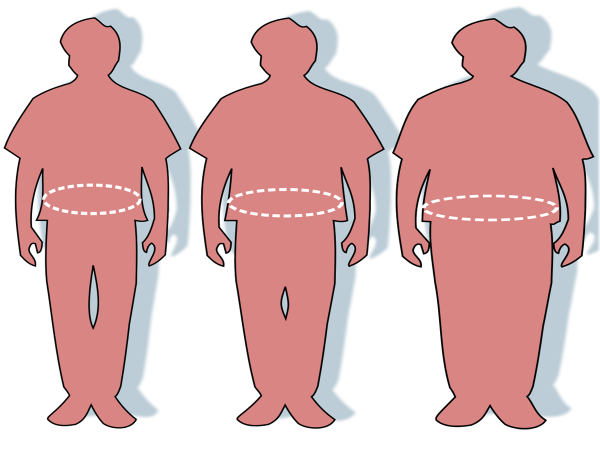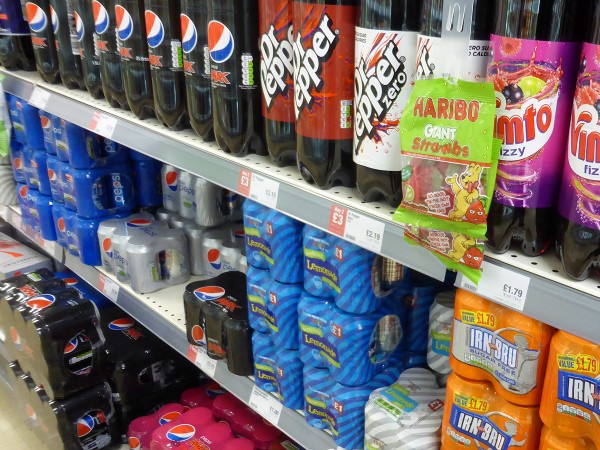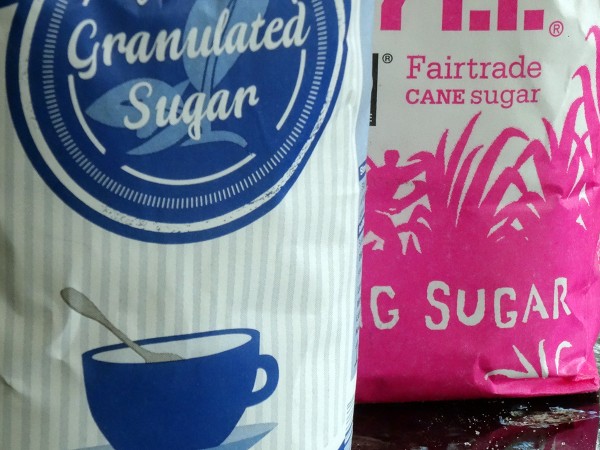 Back in October, we looked at the growing pressure in the UK for a sugar tax. The issue of childhood obesity was considered by the Parliamentary Health Select Committee and a sugar tax, either on sugar generally, or specifically on soft drinks, was one of the proposals being considered to tackle the problem. The committee studied a report by Public Health England, which stated that:
Back in October, we looked at the growing pressure in the UK for a sugar tax. The issue of childhood obesity was considered by the Parliamentary Health Select Committee and a sugar tax, either on sugar generally, or specifically on soft drinks, was one of the proposals being considered to tackle the problem. The committee studied a report by Public Health England, which stated that:
Research studies and impact data from countries that have already taken action suggest that price increases, such as by taxation, can influence purchasing of sugar sweetened drinks and other high sugar products at least in the short-term with the effect being larger at higher levels of taxation.
In his Budget on 16 March, the Chancellor announced that a tax would be imposed on manufacturers of soft drinks from April 2018. This will be at a rate of 18p per litre on drinks containing between 5g and 8g of sugar per 100ml, such as Dr Pepper, Fanta and Sprite, and 24p per litre for drinks with more than 8g per 100ml, such as Coca-Cola, Pepsi and Red Bull.
 Whilst the tax has been welcomed by health campaigners, there are various questions about (a) how effective it is likely to be in reducing childhood obesity; (b) whether it will be enough or whether other measures will be needed; and (c) whether it is likely to raise the £520m in 2018/19, falling to £455m by 2020/21, as predicted by the Treasury: money the government will use for promoting school sport and breakfast clubs.
Whilst the tax has been welcomed by health campaigners, there are various questions about (a) how effective it is likely to be in reducing childhood obesity; (b) whether it will be enough or whether other measures will be needed; and (c) whether it is likely to raise the £520m in 2018/19, falling to £455m by 2020/21, as predicted by the Treasury: money the government will use for promoting school sport and breakfast clubs.
These questions are all linked. If demand for such drinks is relatively inelastic, the drinks manufacturers will find it easier to pass the tax on to consumers and the government will raise more revenue. However, it will be less effective in cutting sugar consumption and hence in tackling obesity. In other words, there is a trade off between raising revenue and cutting consumption.
 This incidence of tax is not easy to predict. Part of the reason is that much of the market is a bilateral oligopoly, with giant drinks manufacturers selling to giant supermarket chains. In such circumstances, the degree to which the tax can be passed on depends on the bargaining strength and skill of both sides. Will the supermarkets be able to put pressure on the manufacturers to absorb the tax themselves and not pass it on in the wholesale price? Or will the demand be such, especially for major brands such as Coca-Cola, that the supermarkets will be willing to accept a higher price from the manufacturers and then pass it on to the consumer?
This incidence of tax is not easy to predict. Part of the reason is that much of the market is a bilateral oligopoly, with giant drinks manufacturers selling to giant supermarket chains. In such circumstances, the degree to which the tax can be passed on depends on the bargaining strength and skill of both sides. Will the supermarkets be able to put pressure on the manufacturers to absorb the tax themselves and not pass it on in the wholesale price? Or will the demand be such, especially for major brands such as Coca-Cola, that the supermarkets will be willing to accept a higher price from the manufacturers and then pass it on to the consumer?
Then there is the question of the response of the manufacturers. How easy will it be for them to reformulate their drinks to reduce sugar content and yet still retain sales? For example, can they produce a product which tastes like a high sugar drink,  but really contains a mix between sugar and artificial sweeteners – effectively a hybrid between a ‘normal’ and a low-cal version? How likely are they to reduce the size of cans, say from 330ml to 300ml, to avoid raising prices?
but really contains a mix between sugar and artificial sweeteners – effectively a hybrid between a ‘normal’ and a low-cal version? How likely are they to reduce the size of cans, say from 330ml to 300ml, to avoid raising prices?
The success of the tax on soft drinks in cutting sugar consumption depends on whether it is backed up by other policies. The most obvious of these would be to impose a tax on sugar in other products, including cakes, biscuits, low-fat yoghurts, breakfast cereals and desserts, and also many savoury products, such as tinned soups, ready meals and sauces. But there are other policies too. The Public Health England report recommended a national programme to educate people on sugar in foods; reducing price promotions of sugary food and drink; removing confectionery or other sugary foods from end of aisles and till points in supermarkets; setting broader and deeper controls on advertising of high-sugar foods and drinks to children; and reducing the sugar content of the foods we buy through reformulation and portion size reduction.
Articles
- Sugar tax: How it will work?
BBC News, Nick Triggle (16/3/16)
- Will a sugar tax actually work?
The Guardian, Alberto Nardelli and George Arnett (16/3/16)
- Coca-Cola and other soft drinks firms hit back at sugar tax plan
The Guardian, Sarah Butler (17/3/16)
- Sugar tax could increase calories people consume, economic experts warn
The Telegraph, Kate McCann, and Steven Swinford (17/3/16)
- Nudge, nudge! How the sugar tax will help British diets
Financial Times, Anita Charlesworth (18/3/16)
- Is the sugar tax an example of the nanny state going too far?
Financial Times (19/3/16)
- Government’s £520m sugar tax target ‘highly dubious’, analysts warn
The Telegraph, Ben Martin (17/3/16)
- Sorry Jamie Oliver, I’d be surprised if sugar tax helped cut obesity
The Conversation, Isabelle Szmigin (17/3/16)
- Sugar sweetened beverage taxes
What Works for Health (17/12/15)
Questions
- What determines the price elasticity of demand for sugary drinks in general (as opposed to one particular brand)?
- How are drinks manufacturers likely to respond to the sugar tax?
- How are price elasticity of demand and supply relevant in determining the incidence of the sugar tax between manufacturers and consumers? How is the degree of competition in the market relevant here?
- What is meant by a socially optimal allocation of resources?
- If the current consumption of sugary drinks is not socially optimal, what categories of market failure are responsible for this?
- Will a sugar tax fully tackle these market failures? Explain.
- Is a sugar tax progressive, regressive or proportional? Explain.
- Assess the argument that the tax on sugar in soft drinks may actually increase the amount that people consume.
- The sugar tax can be described as a ‘hypothecated tax’. What does this mean and is it a good idea?
- Compare the advantages and disadvantages of a tax on sugar in soft drinks with (a) banning soft drinks with more than a certain amount of sugar per 100ml; (b) a tax on sugar; (c) a tax on sugar in all foods and drinks.
 Obesity is on the rise, especially in children. With all the attendant health problems, concern is growing and various policies have been proposed to try to tackle the problem. One such policy is a sugar tax. This could be either a universal tax on sugar in food products or a tax just on soft drinks, many of which are very high in sugar – typically about seven teaspoons in a can or individual bottle.
Obesity is on the rise, especially in children. With all the attendant health problems, concern is growing and various policies have been proposed to try to tackle the problem. One such policy is a sugar tax. This could be either a universal tax on sugar in food products or a tax just on soft drinks, many of which are very high in sugar – typically about seven teaspoons in a can or individual bottle.
Currently the issue is being considered by the UK’s Parliamentary Health Select Committee. Jamie Oliver, the TV chef and restaurateur, argued strongly before the committee in favour of a sugar tax on fizzy drinks. He has already imposed a levy on soft drinks with added sugar in his restaurants. He maintained that it was not just the higher price from a sugar tax that would deter consumption of such drinks, but it would send out an important message that too much sugar is bad for you.
 Two days later, Dr Alison Tedstone appeared before the committee. She is chief nutritionist at Public Health England. PHE has been carrying out research into obesity and ways of tackling it. It has reviewed two types of evidence: experimental data on the effects of imposing higher prices on products with added sugar; and the effects of policies pursued in other countries. She stated to the committee that ‘universally all the evidence shows that the tax does decrease consumption’ and that ‘the higher the tax increase, the greater the effect’.
Two days later, Dr Alison Tedstone appeared before the committee. She is chief nutritionist at Public Health England. PHE has been carrying out research into obesity and ways of tackling it. It has reviewed two types of evidence: experimental data on the effects of imposing higher prices on products with added sugar; and the effects of policies pursued in other countries. She stated to the committee that ‘universally all the evidence shows that the tax does decrease consumption’ and that ‘the higher the tax increase, the greater the effect’.
The government was not planning to publish the report at this stage, but under considerable pressure agreed to its publication.
The articles look at the prospects for a sugar tax, its likely effects if one were introduced and at the politics of the situation, which are likely to result in such a tax being rejected.
Videos and audio podcasts
 Can you be trusted to eat less sugar? BBC News, Hugh Pym (22/10/15)
Can you be trusted to eat less sugar? BBC News, Hugh Pym (22/10/15)
 ‘Introduce sugar tax’, health officials tell government Channel 4 News, Victoria Macdonald (22/10/15)
‘Introduce sugar tax’, health officials tell government Channel 4 News, Victoria Macdonald (22/10/15)
 Jamie Oliver: ‘Bold’ sugar tax to beat childhood obesity BBC News, Hugh Pym (19/10/15)
Jamie Oliver: ‘Bold’ sugar tax to beat childhood obesity BBC News, Hugh Pym (19/10/15)
 Be bold on sugar tax, Jamie Oliver says BBC News, Nick Triggle (19/10/15)
Be bold on sugar tax, Jamie Oliver says BBC News, Nick Triggle (19/10/15)
 Health scientists’ links with sugar industry queried BBC News, Dominic Hughes (12/2/15)
Health scientists’ links with sugar industry queried BBC News, Dominic Hughes (12/2/15)
 Mexico’s soda tax is starting to change some habits, say health advocates PRI’s The World on YouTube, Jill Replogle (2/12/14)
Mexico’s soda tax is starting to change some habits, say health advocates PRI’s The World on YouTube, Jill Replogle (2/12/14)
Articles
Jeremy Hunt told sugar tax would cut childhood obesity as review Government tried to suppress is published Independent, Charlie Cooper (20/10/15)
Sugar tax could help solve Britain’s obesity crisis, expert tells MPs The Guardian, Ben Quinn (21/10/15)
Jamie Oliver ‘expects kicking’ over sugar tax The Guardian, Jessica Elgot (22/10/15)
Sugar tax, fat fines and gold coins: new ways cities are tackling obesity The Guardian, Sarah Johnson (22/10/15)
Sugar tax and offers ban ‘would work’ BBC News (22/10/15)
Public Health England tells UK government: Sugar taxes do work FoodNavigator.com, Niamh Michail (21/10/15)
Childhood Obesity Partially Down To The Coco Pops Monkey, Sugar Tax Report Claims Huffington Post, Sarah Ann Harris (21/10/15)
Health officials back a sugar tax – and want the Coco Pops monkey banned The Telegraph, Laura Donnelly (20/10/15)
Jeremy Hunt embroiled in row over sugar tax report The Telegraph, Laura Donnelly (11/10/15)
Revealed: ‘Sugar tax report’ which was suppressed by Government The Telegraph, Laura Donnelly (22/10/15)
Public Health England obesity report: the key points The Guardian, James Meikle (22/10/15)
Cameron says no to sugar tax Mail Online, Jason Groves and Daniel Martin (21/10/15)
Sugar tax: Former health minister backs levy to prevent NHS ‘obesity crisis’ Independent, Charlie Cooper (21/10/15)
Journal articles and reports
Sugar Reduction: The evidence for action Public Health England, Dr Alison Tedstone, Victoria Targett, Dr Rachel Allen and staff at PHE (22/10/15)
Effects of a fizzy drink tax on obesity rates estimated NHS CHoices (1/11/13)
Overall and income specific effect on prevalence of overweight and obesity of 20% sugar sweetened drink tax in UK: econometric and comparative risk assessment modelling study British Medical Journal, Adam D M Briggs, Oliver T Mytton, Ariane Kehlbacher, Richard Tiffin, Mike Rayner and Peter Scarborough (2013;347:f6189)
Perspectives: Time for a sugary drinks tax in the UK? Journal of Public Health, Oliver Mytton (29/5/14)
Sugar reduction: Responding to the challenge Public Health England, Dr Alison Tedstone, Ms Sally Anderson and Dr Rachel Allen and staff at PHE (June 2014)
Questions
- What factors are driving the current high consumption of sugar?
- How is the concept of price elasticity of demand relevant to the effectiveness of imposing a sugar tax?
- What would determine the incidence of such a tax between food and drink manufacturers and consumers?
- Would such a tax be progressive, regressive or neutral? Explain.
- What other policies could be pursued to discourage the consumption of sugar? Discuss their likely effectiveness and compare them with a sugar tax.
- What externalities are involved in sugar consumption? How would you set about measuring them? Should a sugar tax be set at a rate that internalises the estimated externalities?
- Examine the objections to imposing a sugar tax.
 The problem of obesity and healthy eating is a growing problem in many countries and governments have long been looking into designing policy to tackle this issue.
The problem of obesity and healthy eating is a growing problem in many countries and governments have long been looking into designing policy to tackle this issue.
Some have gone for healthy eating campaigns and policies to encourage pregnant women to eat better, but one government took it a step further and introduced a Fat Tax. In October 2011, the Danish government introduced a tax on foods that are high in saturated fat in a bid to reduce consumption of these goods. However, this policy is now to be abolished.
The Fat Tax introduced by the government imposed a surcharge on foods that contained more than 2.3% saturated fat. Numerous products were affected, including meats, dairy and as expected – processed foods. The policy was criticised by scientists who said that saturated fat was the wrong target and perhaps they were proved right, but the government’s u-turn, which will now see the tax being abolished. The tax had gradually increased food prices throughout the country and authorities said that it had even put Danish jobs at risk.
With food prices much higher in Denmark with the tax, consumers switched from buying domestically produced goods to crossing the border into Germany and purchasing their cheaper food. This undoubtedly had an adverse effect on the Danish economy, as it represented a cut in consumer expenditure. Perhaps it also helps to explain Germany’s strong economy – it was feeding 2 nations! The Danish tax ministry said:
‘The fat tax and the extension of the chocolate tax — the so-called sugar tax — has been criticised for increasing prices for consumers, increasing companies’ administrative costs and putting Danish jobs at risk … At the same time it is believed that the fat tax has, to a lesser extent, contributed to Danes travelling across the border to make purchases … Against this background, the government and the (far-left) Red Green Party have agreed to abolish the fat tax and cancel the planned sugar tax’
Once the tax is abolished, other policies will need implementing to tackle the problem of obesity and encourage healthy eating, as it continues to be a big problem in this and many other countries. The following articles consider this problem.
Denmark to scrap world’s first fat tax Associated Press (10/11/12)
Denmark to abolish tax on high-fat foods BBC News (10/11/12)
Fat tax repealed The Copenhagen Post (10/11/12)
Businesses call fat tax a failure on all fronts The Copenhagen Post, Ray Weaver (10/11/12)
Questions
- Illustrate the effect of a tax being imposed on a diagram. What happens to equilibrium price and quantity?
- According to Danish authorities, consumers didn’t change their consumption habits with the tax. What does this suggest about the PED of these products?
- How does the amount of tax revenue generated vary with the price elasticity of demand and supply?
- What other policies could be implemented to encourage healthy eating?
- Why did this fat tax lead to higher food prices?
- Explain the way in which such a tax could adversely affect the Danish economy. Does this justify its removal?
 Back in October, we looked at the growing pressure in the UK for a sugar tax. The issue of childhood obesity was considered by the Parliamentary Health Select Committee and a sugar tax, either on sugar generally, or specifically on soft drinks, was one of the proposals being considered to tackle the problem. The committee studied a report by Public Health England, which stated that:
Back in October, we looked at the growing pressure in the UK for a sugar tax. The issue of childhood obesity was considered by the Parliamentary Health Select Committee and a sugar tax, either on sugar generally, or specifically on soft drinks, was one of the proposals being considered to tackle the problem. The committee studied a report by Public Health England, which stated that: Whilst the tax has been welcomed by health campaigners, there are various questions about (a) how effective it is likely to be in reducing childhood obesity; (b) whether it will be enough or whether other measures will be needed; and (c) whether it is likely to raise the £520m in 2018/19, falling to £455m by 2020/21, as predicted by the Treasury: money the government will use for promoting school sport and breakfast clubs.
Whilst the tax has been welcomed by health campaigners, there are various questions about (a) how effective it is likely to be in reducing childhood obesity; (b) whether it will be enough or whether other measures will be needed; and (c) whether it is likely to raise the £520m in 2018/19, falling to £455m by 2020/21, as predicted by the Treasury: money the government will use for promoting school sport and breakfast clubs. This incidence of tax is not easy to predict. Part of the reason is that much of the market is a bilateral oligopoly, with giant drinks manufacturers selling to giant supermarket chains. In such circumstances, the degree to which the tax can be passed on depends on the bargaining strength and skill of both sides. Will the supermarkets be able to put pressure on the manufacturers to absorb the tax themselves and not pass it on in the wholesale price? Or will the demand be such, especially for major brands such as Coca-Cola, that the supermarkets will be willing to accept a higher price from the manufacturers and then pass it on to the consumer?
This incidence of tax is not easy to predict. Part of the reason is that much of the market is a bilateral oligopoly, with giant drinks manufacturers selling to giant supermarket chains. In such circumstances, the degree to which the tax can be passed on depends on the bargaining strength and skill of both sides. Will the supermarkets be able to put pressure on the manufacturers to absorb the tax themselves and not pass it on in the wholesale price? Or will the demand be such, especially for major brands such as Coca-Cola, that the supermarkets will be willing to accept a higher price from the manufacturers and then pass it on to the consumer? but really contains a mix between sugar and artificial sweeteners – effectively a hybrid between a ‘normal’ and a low-cal version? How likely are they to reduce the size of cans, say from 330ml to 300ml, to avoid raising prices?
but really contains a mix between sugar and artificial sweeteners – effectively a hybrid between a ‘normal’ and a low-cal version? How likely are they to reduce the size of cans, say from 330ml to 300ml, to avoid raising prices?

